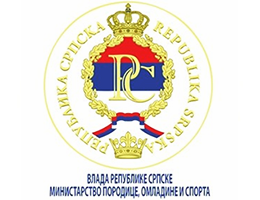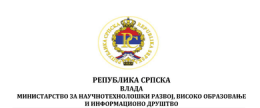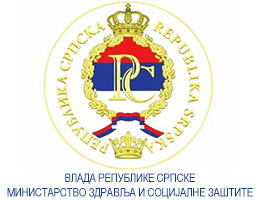The Differences in Motor Abilities and Body Composition Between Boys and Girls Age of 7
Volume 2, Issue 1 (2012)
Volume 2, Issue 1 (2012)
The Differences in Motor Abilities and Body Composition Between Boys and Girls Age of 7
Abstract:
Considering that during the growth and development motor abilities and morphological characteristics are changing, it is inevitable to follow them in different ages. On the example of 125 respondents, 62 boys and 63 girls at 7.39 decimal years, who attended first grade at primary schools in Subotica, basical anthropometrical characteristics are measured, general motor abilities are proved on the basis of 7 motor tests, and body composition is showed by In Body 230 machine. On the basis of the results of MANOVA it could be concluded that there are statistically important differences in favour of boys in motor variables of 20-m dash, standing broad jump, obstacle course backwards, and the variable seated straddle stretch are in favour of girls. Boys in the variables for the percent of body composition, whole quantity of muscles and water in the organism had better and statistically more important percentage results contrary to girls.
Keywords:
motor abilities, body composition, children of age 7
Full Text:
References:
- Bala, G., Popović B. i Sabo, E. (2006). Istraživanja na predškolskoj deci u Novom Sadu. U G. Bala (Ur.), Fizička aktivnost dečaka i devojčica predškolskog uzrasta (str. 75-102). Novi Sad: Fakultet fizičke kulture.
- Bala, G., Stojanović, M., Stojanović, M. V. (2007). Merenje i definisanje motoričkih sposobnosti dece. Novi Sad: Fakultet sporta i fizičkog vaspitanja.
- Blair, S.N. & Hardman, A. (1995). Special issue: Physical activity, health and wellbeing an international scientific consensus conference. Research Quarterly for Exercise and Sport, 66 (4), 141-149.
- Branta, C., Haubenstricker, J., and Seefeldt, V. (1984). Age changes in motor skills during childhood and adolescence, Exercise Sport Sci. Rev., 12, 467.
- Burton, W. A.& Miller, D. E. (1998). Movement Skill Assessment. Human Kinetics, Champaign.
- Gajić, M. i Kalajdžić, J. (1986). Promene koordinacije, eksplozivne snage i gipkosti u periodu ontogeneze od 11-14 godina, (elaborat). Novi Sad: Fakultet fizičke kulture.
- Jess, M.C., Collins, D., and Burwitz, L. (1998). Children and physical activity: the centrality of basic movement skill development, in Active Living Trough Quality Physical Education, Fischer, R., Laws, C., and Moses, J., Eds.,London, 90-95.
- Korovljev, D., Mikalački, M. i Čokorilo, N. (2010). Uticaj telesne kompozicije na performanse snage kod žena starih 19 godina. Glasnik Antropološkog društva Srbije, 45, 483-491.
- Maksimović, N. i Milošević, Z. (2008). Stil života mladih Vojvodine. Novi Sad: Fakultet sporta i fizičkog vaspitanja, Savez za školski sport i olimpijsko vaspitanje.
- Maslov, H.A. (1982). Motivacija i ličnost. Beograd: Nolit.
- Matić, R. (2008). Relacije motoričkih sposobnosti, morfoloških i socio-ekonomskih karakteristika dece mlađeg školskog uzrasta. Magistarski rad, Novi Sad: Fakultet sporta i fizičkog vaspitanja.
- Mikalački, M. (2000). Teorija i metodika sportske rekreacije. Novi Sad: Fakultet fizičke kulture.
- Milne, C., Seefeldt, V., & Reuschlein, P. (1976). Relationship between grade, sex, race, and motor performance in young children , Res. Q. Exercise Sport, 47, 726.
- Mišigoj-Duraković, M. (2006). Kinantropologija - biološki aspekti tjelesnog vježbanja. Zagreb: Kineziološki fakultet.






